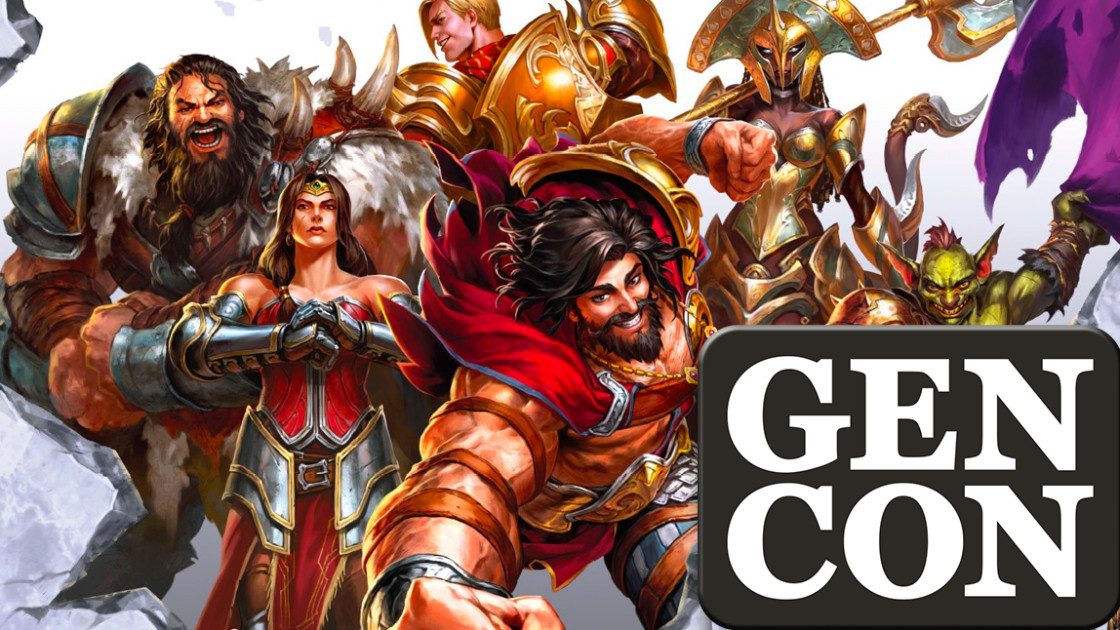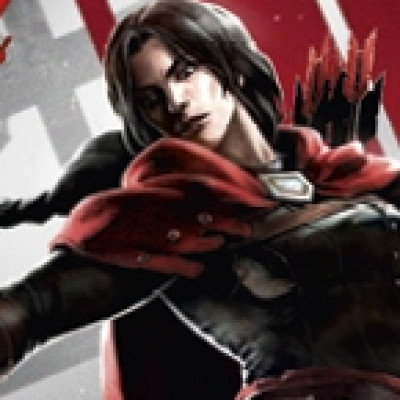Alex: Two years ago, I critiqued LSS for their lack of presence at Gen Con, the largest tabletop convention in North America; and while I can't say with any evidence that my article led directly to their attending the following year, no one's corrected my head canon yet. Now in their second year at Gen Con, LSS is a major presence, with predominant billing on the venue map, top-tier convention exclusives, and a full schedule of events - including a Pro Quest+.
This was my fifth time attending Gen Con, so I have my own strategies and preferences for how I survive a weekend at the con. One of my most rigid convictions: sign up for as little as possible. I prefer not to keep a calendar at Gen Con, instead using the opportunity afforded by the con to follow my interests as I stumble across them. While I could have easily filled the weekend entirely with Flesh and Blood events, I attend Gen Con for the breadth of content, not the depth; and LSS' own event schedule is robust enough that a FAB-only Gen Con would feel a poor substitute for anything LSS does themselves. This year the only item on my pre-purchased schedule was a Smash Palace Premiere event I'd booked for me and my daughter, along with fellow writer Ayli and her wife.
Ayli: Alex put the idea in our brains to attend Gen Con this year, and we went as all-out as we could muster. My wife and I did our first cosplays and went the couples' route (amusingly, Alex and I came very close to being the same character), and she really put herself out there this year. My wife lives with a great deal of social anxiety. Usually, Armory drains her social battery, and afterwards she becomes a hermit for the rest of the day. I'm very proud of her for being gung-ho on cosplay, board game tournaments, and other social events - and then owning it the whole convention.
This was our first year going to Gen Con, or for that matter, any convention remotely approaching its size. My wife is actually a seasoned con-goer for anime conventions, but I only attend a yearly small convention of primarily Games Workshop tournaments. Needless to say, I was out of my depth. My wife scheduled a couple board game tournaments and demos every day. When I wasn't playing in those events with my wife, I was usually playing FAB. A few friends I had never met in person were in attendance, and all of them played FAB. It was an easy way to fill time, and more importantly, a consistent location my wife could find me at. She loves FAB, but while I played countless matches over the weekend, she only played three. Two of those were Smash Palace. While I agree with Alex that a FAB-only Gen Con would feel shallow, it was good to have a loose schedule of enjoyable demos and a familiar hobby as the foundation for my experience.
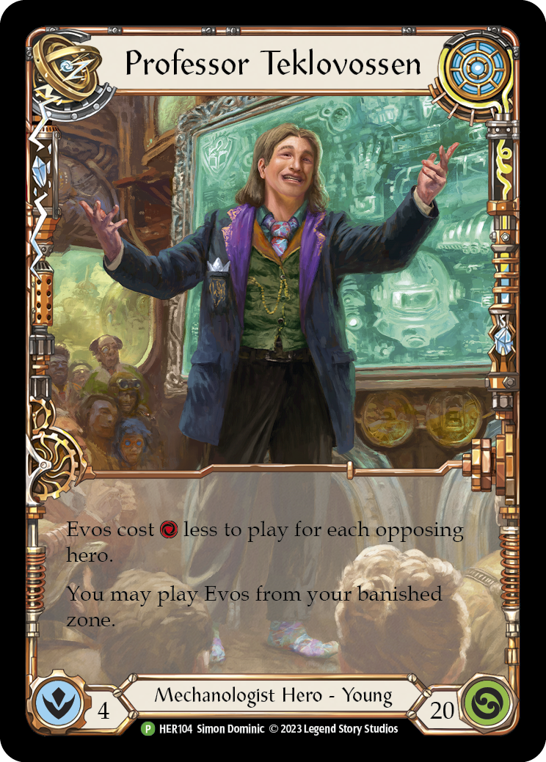

Alex: I was intent on trying Smash Palace at Gen Con because it felt like an ideal tone for the setting. A 4-player version of Flesh and Blood with no deck construction required, variance and politics policing skill, and down time allowing for socializing was a fit for this event in a way that, perhaps, it would never be anywhere else. And besides all that, you can't help but want a chance to try something a month early!
But I went in skeptical, because I'd been burned by Ultimate Pit Fight before. Round the Table was almost an RPG in how every hero had their role to play to make the experience work - and ultimately, it couldn't live up to the promise of reinvigorating a format to a degree that you'd want to return to it. I have literally never had a positive UPF experience; I've never looked at the options for an evening of FAB and thought, "The best way to play with this group tonight would be a free-for-all."
Ayli: I had never played UPF, but I have experience with multiplayer in other TCGs, namely Magic the Gathering's Commander format. While it could be fun, I grew to almost resent the format for becoming such a mainstay that it often felt like the default way to play the game; if you weren't playing Commander in the LGS or the college club meeting, you weren't playing Magic. What usually makes multiplayer fun in TCGs is that the cards and the game aren't built for it; that re-contextualizes every card choice in your deck, and leads to funny situations.
Unfortunately, I think this is precisely why UPF has never appealed to me. The rules of the format only exacerbate how out of place multiplayer feels in FAB. I personally don't feel like the card pool has the depth to support that experience, and the light adjustments to the base rules don't make up for that. Perhaps I'm judging a book by its cover, but I don't need to play the format to know that.
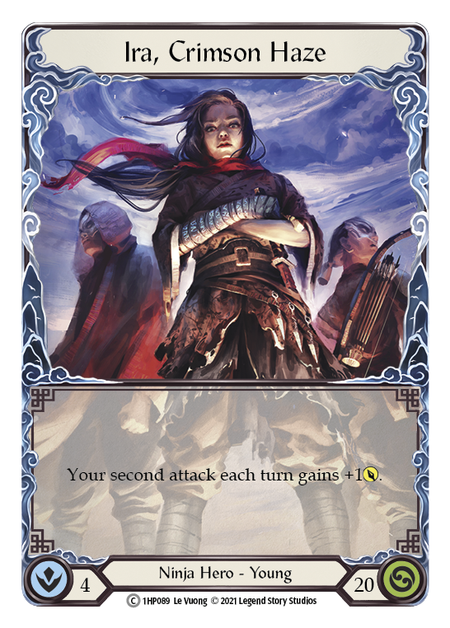
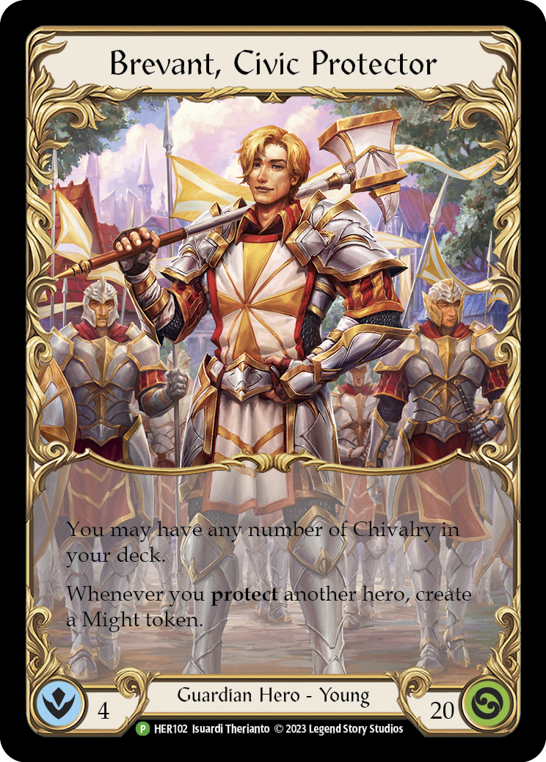
With that, let's just get into it: here's our experience with Smash Palace!
First Impressions
Alex: It's Friday morning, 9am, and Smash Palace is the first thing on our schedules for the second day of the Con. Ayli is running a little behind, so I've had some time to gaze longingly at the board-game-sized box LSS designed for this product. Honestly, it looks great, occupying a very different space than anything else in the Flesh and Blood lineup.
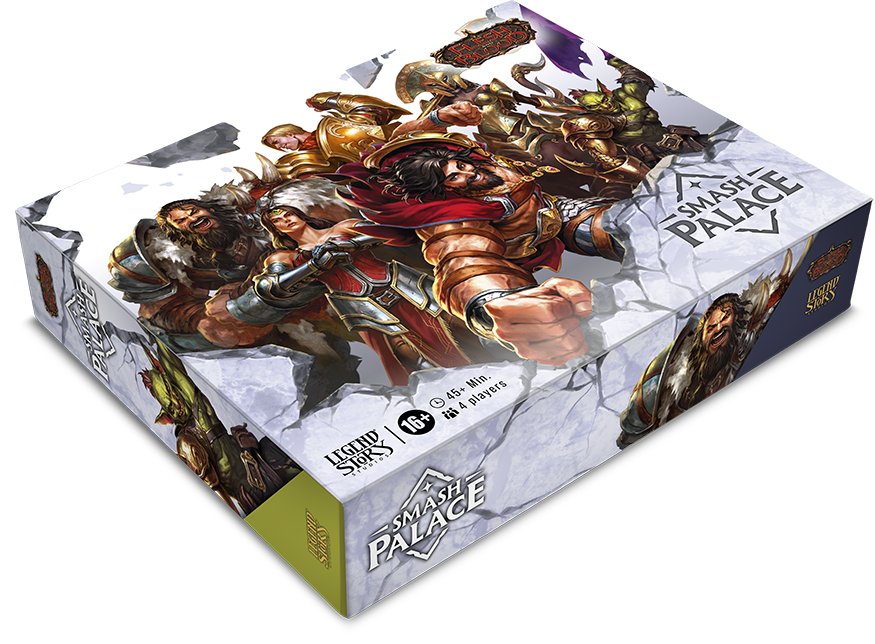
Like most modern board games, there's Age Recommendations, Play Time, and Player Count printed in the lower left corner. Time estimates are notoriously optimistic, and I can't imagine completing a round of Smash Palace in less time than a Classic Constructed match. Note that the game is strictly a 4-player experience - not something I'd considered ahead of time, but in retrospect it should have been obvious.
Ayli: My wife and I, after the convention, actually ran it with two players with the base Crack, Shuffle, Play rules for the set - where both of us played as Valda Brightaxe. It was an absurd experience that quickly revealed why Valda is not an option in Smash Palace. The event deck gives her incredibly swingy turns where she hardly has to set up for her powerful payoff.
I actually think there's probably an interesting way to bring this to a cube draft environment. It would be zany, but it would certainly be a memorable play experience!
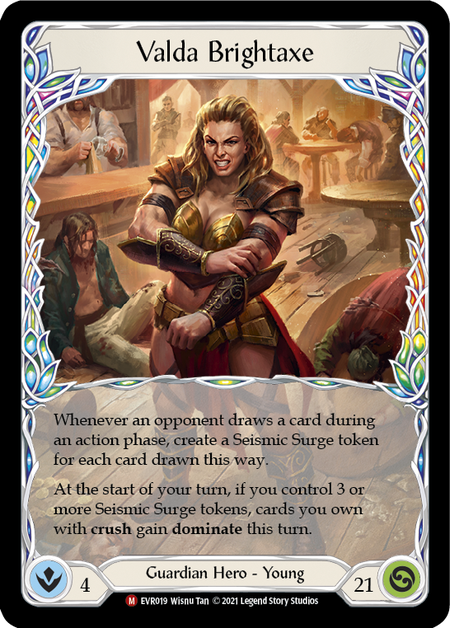
Alex: The ironic thing about the board game presentation is that this is the least self-contained gateway product they've ever produced! Armory Decks can be played against each other repeatedly, as can Blitz decks; if anything, Round the Table was too self-contained! But Smash Palace cannot be played (as intended) without 12 fresh booster packs; you'll need to store this with sealed Mastery Pack: Guardian boxes if you want to pull it off your shelf for a game night.
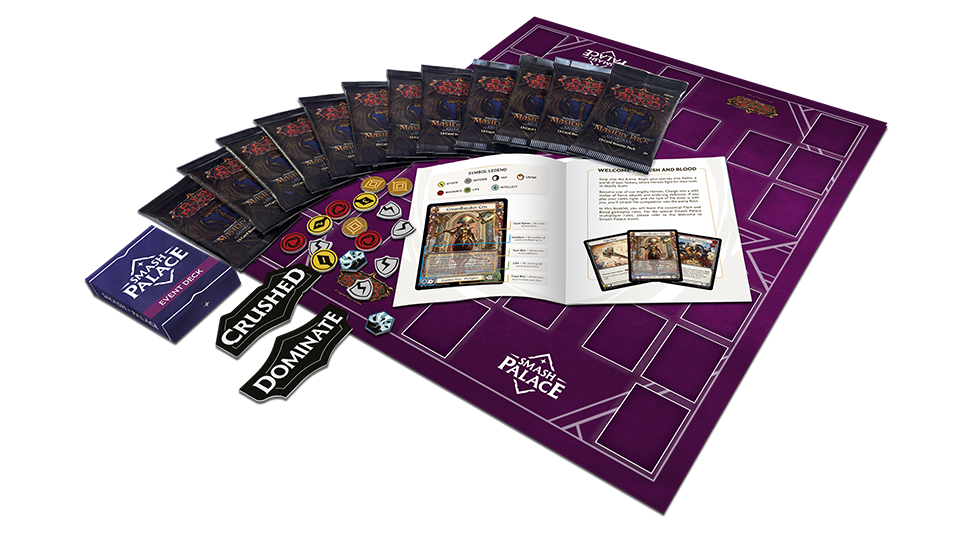
LSS was providing play copies for the event, but each of us had paid for a copy of Smash Palace in our admission, and we were given those sealed to take home with us. The box supplies you with a host of cardboard tokens that I expect to see players add to their deck boxes going forward - at least, those of us who haven't sunk our cash into custom tokens already! The arena was defined by two separate cardboard play areas, in many ways similar to the double-sided playmats we see on streams; while there's no reason you'd need to use them over playmats you may already own, the consistency of aesthetics across the entire game was a nice touch, and made clear what we were playing.
Ayli: The materials in the box immediately drew me in. When the game is laid out, it looks like the ultimate pit fight in card game form. It's clear from the punchout tokens that a great deal of thought was put into what players would need and how they would use them. For example, there are double-sided Seismic Surge and Gold token cards for those who need the rules text, and also simple cardboard tokens for those who don't. I'm especially happy LSS chose to include resource tokens; there's no need for dice in this box.
The stacked effects of attacks - easily lost across the chaos of 4 separate players taking 4 separate turns - are represented by attack power tokens and special tokens to represent Dominate; once you've been hit with a crush effect, you can drop a 'Crushed' token on your hero to keep it at the forefront of your mind when your next turn comes around.
Other than the box of Mastery Pack: Guardian required for each additional play, this is a truly complete experience. I could see new Guardian players buying Smash Palace just for the boosters and tokens - after all, at MSRP, it's only about $15 USD more than a box of MPG.
Choose Your Champion!
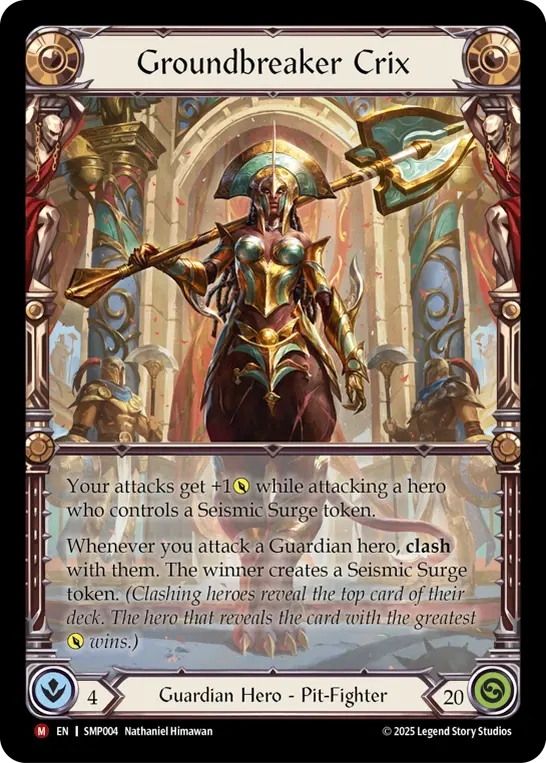
Alex: My daughter Ivy chose first, immediately drawn to Groundbreaker Crix. This hero has a visual design like no one else in Rathe, and her power plays nicely with the wider mix of effects present in the format. Crix creates a disincentive to creating Seismic Surge tokens, and Ivy made sure we paid for the benefit every time.
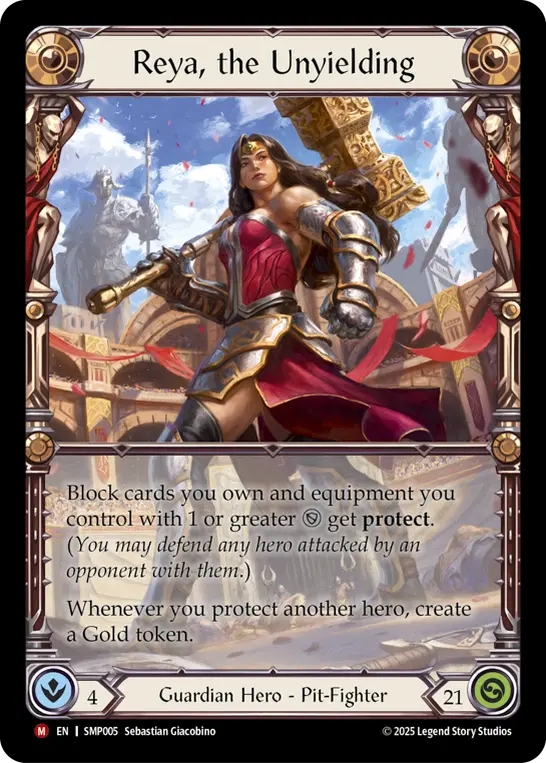
Ayli: I chose Reya, the Unyielding for this foray into the arena. I wanted a hero who engaged with the game in a way that can only happen in UPF. Gold is a premium resource in Smash Palace, and with no shortage of blocks in the card pool, a sneaky protect play could - and to my surprise, did - yield powerful results. While Brevant, Civic Protector was a good first attempt at this concept, I think Reya gives a powerful incentive for thwarting a foe's plans by saving their target. Sure, that target is also one of your enemies, but sometimes keeping the game in certain state for another turn or two is exactly what you need to assert a dominant position at the table.
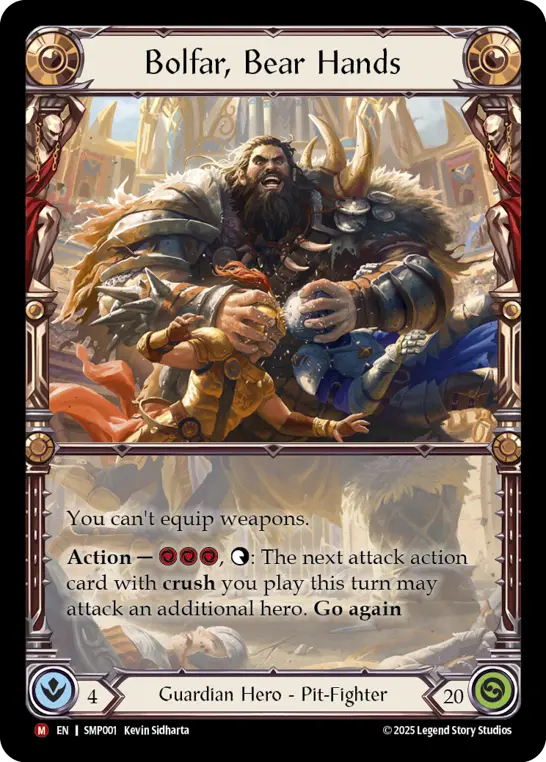
My wife chose Bolfar, Bear Hands. She only activated him twice, but each time it was approaching turn-ruining for Alex and I. I was constantly wary of my neighbor. He's a fun choice, but comes with real risks. Fatigue is a valid strategy in Smash Palace, so not having a weapon is a serious liability. However, if the cards line up, sending two attacks for 10 with dominate is probably up there for the most fun someone can have in the game - or so my wife thinks, anyway.
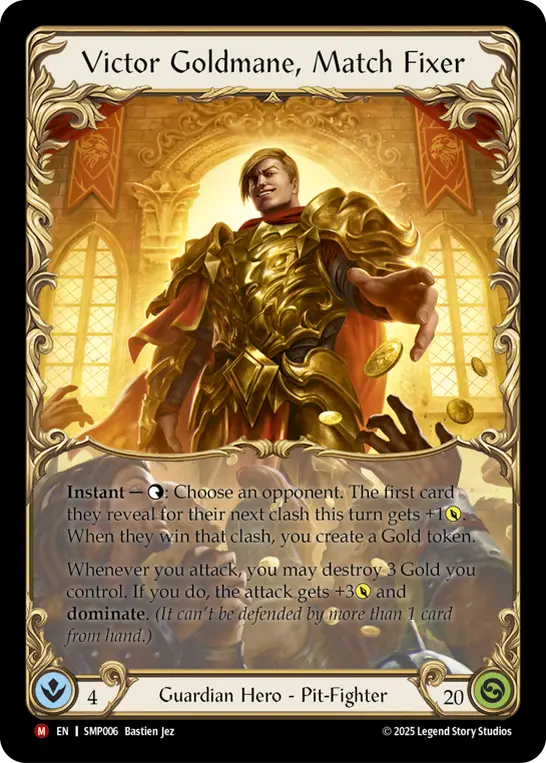
Alex: Locked into 4th position, I decided someone had to play the heel and claimed Victor Goldmane, Match Fixer. While I've never taken to the original Victor, this version has a fun minigame to him, and I enjoyed getting involved in every clash Crix reliably initiated. It takes a while to hoard 3 gold in this format, so his power is best viewed as a once-per-game finisher. (That's not how I used it, but probably should have been.)
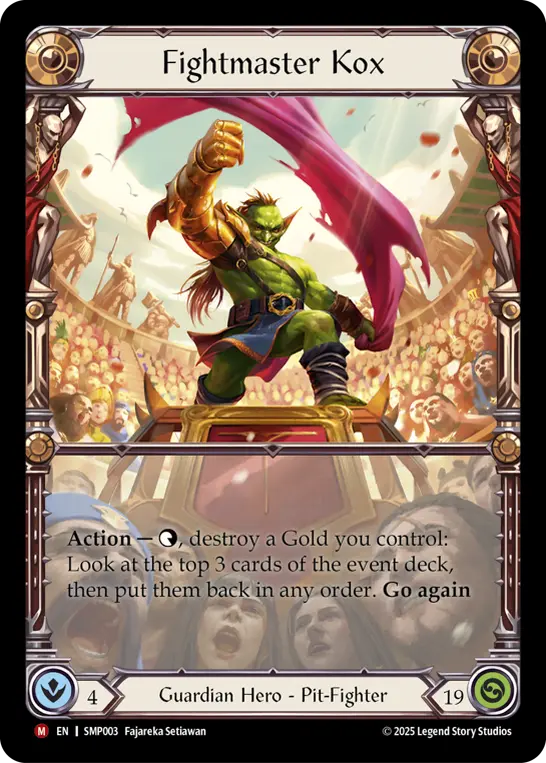

Ayli: While we can't speak to Bravo's latest incarnation, I can jump outside of this particular session to discuss the other unchosen hero, Fightmaster Kox. I had the opportunity to play Smash Palace the night prior in our hotel room with some friends (it's why we were late that morning - my wife and I were in a game until 2 AM). For that match, I chose Kox. He has an ability that results in some very funny plays; but unfortunately, while gold generation is in the event deck, I struggled to ever have gold. The table didn't allow me to have any, and the cards didn't fall right. I'd been broke for an hour before another player took pity on me and gave me the gold so I wasn't just a 19-life blank text box. It was immediately apparent why everyone had kept me off it: this could be the most maniacal hero in the box! My inability to get gold stifled most of the fun I could've been having; I'm not sure if this is how most Fightmaster games go, or simply how mine played out. Either way, there is significant risk in playing Kox. His lower life total is a serious consideration, and without consistent gold generation in MPG itself, the Kox player could feel left out.
Into the Arena
Once our heroes were in order, we got our packs and immediately set to ripping them open. We removed the last three cards in the booster, then equipped ourselves with High Riser - the only weapon in the format and in nearly every pack - plus whatever armor we opened, and set to playing right away.
I'll start by saying the Crack, Shuffle, Play system feels great to play. It's a consistent experience despite the randomness of boosters, and the largest design feature of Mastery Pack: Guardian. I've seen this framed as a design flaw of the set, as if it was primarily designed around Smash Palace, with Constructed support being secondary to this new Limited format. Games of CSP feel good because of the quality of the common slot - after all, they make up 27 of the 30 cards in your deck. Many of the reprints are quality Guardian cards to begin with. Given the majority of the new cards in the set are rares or above, I have trouble believing design compromises were made for CSP formats.


Alex: Credit where it's due for an astute observation, Ayli - the commons are very well chosen for this set, and they do ensure that your deck has a good ratio of attacks - and blues - to other card types. The heroes are designed to take advantage of what they're likely to have in their deck, and for as much as it's felt irrelevant in modern constructed gameplay, crush is incredibly useful - and interactive - in Smash Palace's all-Guardian multiplayer format.
One dynamic that quickly emerged around crush was the team-up: after a hero is attacked with one crush effect and blocks it out, they become a prime target for follow-up by another opponent who would like their crush effect to hit. (This is where Reya becomes a very interesting foil.) Of course, that's only possible if the 4th player - whose turn comes between Crush 1 and Crush 2 - lets the 2nd Crush-er hold enough cards to play that attack out!


This format gives a few cards their first real chance to shine. I was particularly impressed by the impact of auras - but to really explain that I need to first talk about the wisdom of a Guardian-only Ultimate Pit Fight.
One of the dynamics at play in UPF is the variable pressure you may experience between attack phases. In one round, you may face attacks from both sides; in another, the heat may all be going toward another player, leaving you with a full grip. This can be problematic when you're a hero that's well suited to only one of those two outcomes. Rangers wither under sustained pressure, while Brutes can struggle to convert 4-card cards.
Guardians are a rare class that truly shine when shifting between those postures. A Guardian can throw 3 cards on a block and still feel good about swinging a hammer; or they can push forward armor to block while preserving their attack plan. This makes them dynamic participants in a multiplayer format, because they can truly make whatever decision is needed in the moment. Smash Palace being 100% Guardian is what makes it work, and I'm fairly convinced now that the biggest flaw in UPF has all along been the variety of classes and archetypes.
But in Classic Constructed - where defense is a foregone conclusion - Guardians are seldom built with cards solely meant for extending a turn. Auras have long been cast aside in favor of a greater attack density. That's not the case when you Crack, Shuffle, Play. And because of that, we get to see cards like Seismic Stir bank resources for your next turn, or Stonewall Confidence deter a further round of attacks. I once squandered a dominated attack on a Stonewall'ed Bolfar, only to have it mitigated into irrelevance by the defensive boost.
Ayli: Another benefit of the format being mono-class is it showcases player skill. That might sound odd for a format with random decks and a random event happening at the start of every turn, but I'd argue that's exactly why skill is on display. Players have to navigate their choices very carefully. Having the audacity to make a risky play at the right time can set the tone for the next two players' turns. Additionally, because everyone is a Guardian, fatigue is a real threat. A hero taking multiple smaller, setup turns in a row pays dividends when you have 8 more cards in your deck than your opponents.
This was the strategy Ivy employed while the rest of us basked in chaos, and it made her a lasting threat (I also feel the need to say this was her first time playing Guardian, and she stuck the landing flawlessly). Had I noticed earlier, I may have been able to keep pace; instead, I was caught with her as the final two - and with far less gas in the tank. In a Classic Constructed or Blitz match, I would need specific cards left in the deck to win from my position.
In the end, it was the event deck that finished her off, not me. That might sound like she lost because of the Event Deck, but I think that's a little unfair. Rather, she played in such a way that only the Event Deck could make her lose. I think that's the highest skill expression possible in Smash Palace.
I also think the presence of the Event Deck is a good thing. After all, this is a board game, not a competitive event - but I'll let Alex make the case for why it's a good thing.
Alex: I'll go so far as to say that the Event Deck is what makes Smash Palace work when all Ultimate Pit Fights before it have failed. This format needs the random variables, lest each game become a foregone conclusion the moment alliances are struck. I don't want to spoil anything about this deck for you, but essentially it's the element of opportunity, and it's your job to make sure you're prepared to make the most of it when it comes up for you - or prepared to mitigate it when it turns against you!
(I was not prepared to mitigate it when it skill checked me, and thus a once-leading Victor found himself the first eliminated.)
Ayli: I'll elaborate a touch more on it for those who may be on the fence, so if you want to go in completely blind, skip this textbox.
The Event Deck is well-curated. Its contents can freshen up dead hands, break board stalls, and even shuffle itself so it can't be "pitch stacked." This keeps it fresh and engaging, but most importantly it keeps the game moving.
Alex: I critiqued Smash Palace earlier for being boxed like a board game, but requiring a fresh purchase every time you want to play it. But if I'm being honest, Crack, Shuffle, Play is a key bit of genius in this presentation. If I've found it hard in the past to imagine a scenario where I'd rather play Ultimate Pit Fight than 2-3 rounds of Blitz on a poorly-attended Armory night, the reason to consider Smash Palace is clear: it's a variant format for Limited play, and like High Seas before it, offers unique gameplay you only get by cracking boosters and working with what you've got. It's nearly impossible to pivot into UPF with the Blitz decks you each have on hand, but if your shop has a box of Mastery Pack: Guardian on the shelf, you can all get a Smash Palace going and enjoy it to the fullest. Shops would be wise to keep a box or two open behind the counter, ready to loan players who want to have a little more fun with buying and opening MPG.
Ayli: On the whole, I think Smash Palace is an incredible achievement. Every design clearly had a great deal of thought put into it, and I never felt like something wasn't working. Most importantly, every turn cycle I found myself thinking, "this is how multiplayer FAB should be." I'm actually sold enough on the design that I'm working on multiple cube concepts, including modifying the Event Deck with custom cards, or even swapping classes entirely, with custom heroes to make different mono-class experiences. Smash Palace opened my eyes to what's possible in Limited design. I think Smash Palace is for players of all skill levels, and it's an experience I intend to keep on-hand for years to come.

